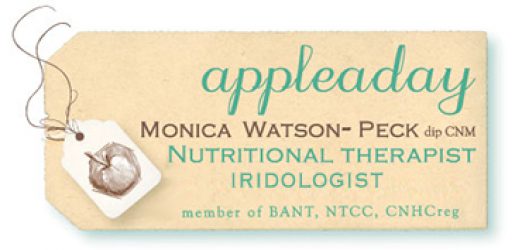It’s almost February, which seems so unlikely as the year only just began moments ago, surely?
In keeping with my new year’s resolution (which actually only dawned on me a week ago, well past new year, oops) I’m going to post more health info blogs on my website rather than just the short social media chat and occasional recipes.
This will keep me on my toes with some mindful research and deliberation, and will hopefully give you something to read and think about; a chance to make comments and suggestions as it’s all a learning game. We are indeed unique, so our experiences will be very individual.
On this last day of the first month (and almost the eleventh hour! Been a long day…) I’m kicking off with the somewhat prosaic topic of high cholesterol.
Oh I know, it feels like we’ve been here, done that, however, in the last two days I’ve seen four clients who came for very different health reasons but all have alarmingly high cholesterol. Scarily high LDL in fact (more about that below).
I took it as a sign to blog about some cholesterol facts and foods.
Apart from this coincidence – these four clients sharing more than they will ever know – the topic of cholesterol has become quite a controversial one; well worth having a chat about.
Contrary to conventional medical thinking these past decades, many studies now show that high cholesterol is NOT the be-all and end-all of CV risk.
A big statement, some may think, however these studies are proving that the measure of cholesterol is not always relevant.
Some people have a high ‘bad’ LDL cholesterol but are living to a healthy heart-attack-free age because, in part at least, their equally rising ‘good’ cholesterol has been offering them protecton. Studies are also showing that when high cholesterol IS relevant to a person’s heart health, it’s not the only ‘measure’ that plays a significant role. As I said, it’s not the be-all and end-all of CV disease.
This is not to say we ignore it altogether.
There is a place on the heart health table for trying to keep high cholesterol in check; certainly if there are other contributing negative factors gathering around that table. Factors such as eating the wrong foods, chronic stress, insufficient exercise, overall body inflammation, smoking, weight gain (obesity is inflammatory and, like stress, it worsens all conditions), familial history of strokes and heart attack, and age (we remove excess cholesterol less efficiently as we get older).
What is cholesterol anyway?
A waxy fat-like substance that’s surprisingly important to our health. It helps make our hormones, converts sunshine (when it’s around!) to vitamin D, is necessary for digestion and brain function, and assists in the absorption of fat-soluble nutrients. Vital in fact for all our cell membranes, so we really don’t want to have too little of it.
When we talk about cholesterol we’re actually talking about the lipoproteins that carry cholesterol around our bloodstream. These are fat on the inside and protein on the out and come in various forms, the two most relevant being, LDL (low-density lipoprotein, the so-called ‘baddie’ of the two, but yes there’s more to it than that regarding particle size and actual ‘badness’; too involved to go through here but there are excellent sites to read about these). And secondly, HDL, the high density lipoprotein which is the ‘good’ cholesterol as it’s protective in that it takes excess cholesterol back to the liver where it’s then used or excreted. (It’s the efficiency of this disposal which can slow down with age, as mentioned above). By removing excess cholesterol the build-up of fatty plaque in your arteries is avoided; a build-up which is associated with low density lipoprotein, LDL and which can then lead to narrowing of the arteries and atherosclerosis.
When you have your cholesterol measured it’s the ratio of these two – LDL and HDL – that’s important to be aware of, not just the total number.
A large proportion of cholesterol that’s circulating in your blood is produced by the liver and intestines; the rest is from diet. This may explain why some people with high cholesterol haven’t had the huge improvement – reduction – in ‘numbers’ that they expected after radically changing their dietary habits.
Nonetheless, for many people the effectiveness of dietary change regarding high cholesterol is extraordinary. I’ve seen it in clinic; one reason I wanted to write this post. It’s an easy and very successful first port of call. Together with getting off your sofa!
So, what are the foods that will make a difference, which will help you avoid taking medications, those statins that can have side effects and which are so very controversial?
Take a look at the photo accompanying this blog.
Eat more of these foods, the likes of flax seeds containing plant sterols that are shown to significantly lower cholesterol. And oats with their soluble fibre. More leafy green fibre such as spinach, chard, kale, radicchio, romaine lettuce, fennel, dandelion, spring greens, rocket, chicory… the list is endless! And more cruciferous veg like broccoli, cauliflower, cabbage.
Also tocotrienols – found in the Vit E family and in the likes of walnuts and virgin olive oil which have shown improvement in arterial health.
And turmeric, always! It’s not just a way of lowering inflammation but it improves vascular function in coronary artery disease and can suppress early atherosclerotic lesions (similar to lovastatin).
Eat far less meat, less overall saturated fats, less ‘whites’ (rice, potatoes, sugar, flour), less fried foods, far less sugars and salt.
Give up smoking, hooray!
And try to get stress levels down, down….
Last but by no means least, get moving.
Exercise will help rebalance your body, move your blood, shift stagnation, drop some kilos, soften the stress in your life, improve energy and alertness, increase happy hormones – and will most definitely help lower your high cholesterol.

